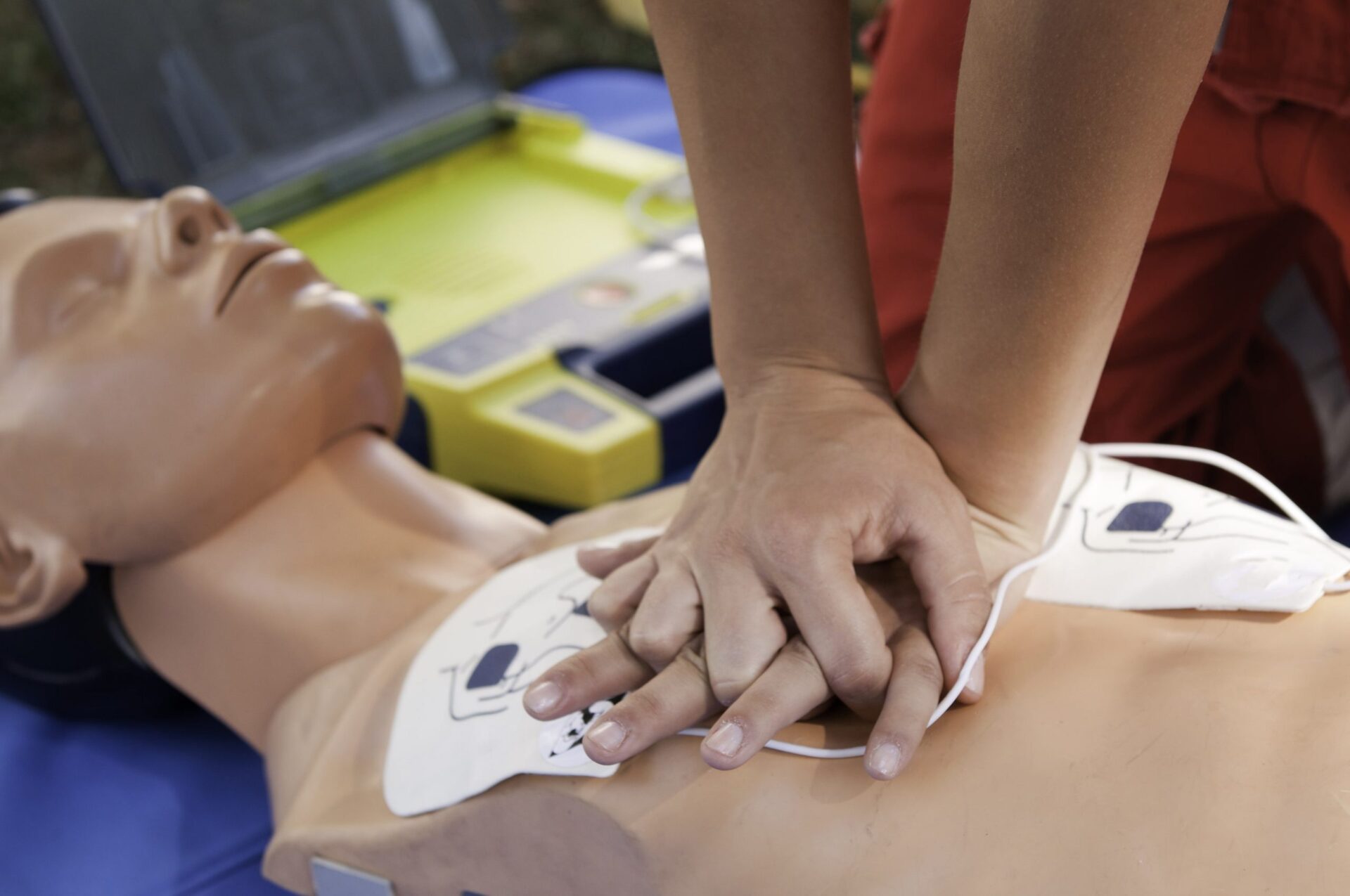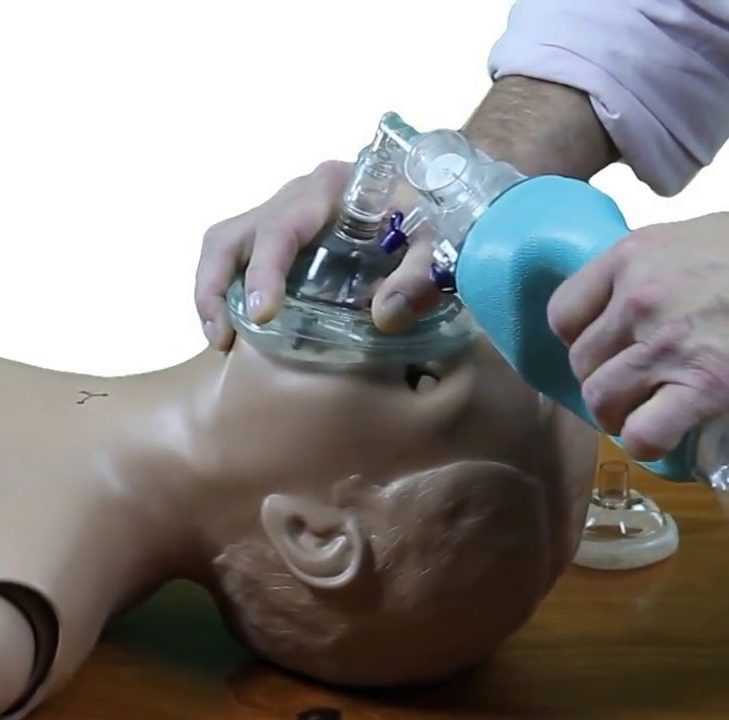Are you prepared to handle an emergency situation wherever one might happen? Medical emergencies don’t just happen in hospitals and medical clinics. They happen at restaurants, in homes, and in public outdoor spaces every day. Cardiac arrest is one of the most common and serious medical emergencies you could encounter on the job or in your daily life. Cardiac arrest occurs when someone’s heart suddenly stops beating. It can happen to anyone, but certain risk factors like age, genetics, smoking, high blood pressure, high cholesterol, and a sedentary lifestyle can greatly increase someone’s risk. Below, we share the adult BLS algorithm for cardiac arrest (as explained in our BLS certification course). But first, let’s learn more about the signs of cardiac arrest and why your response is so critical.
Recognizing the Signs of Cardiac Arrest
Here are some common signs of cardiac arrest:
- Sudden loss of consciousness or responsiveness
- Lack of pulse
- Not breathing
- No response to shaking or tapping on shoulders
- Sudden collapse
- Complaint of chest pain, discomfort, or pressure
- Dizziness
- Nausea or vomiting
Why Fast Action is Critical
According to the American Heart Association, 436,000 Americans die from cardiac arrest each year. Approximately 350,000 of those incidents happen outside hospitals.
While these numbers are incredibly high, fast recognition and treatment of cardiac arrest — by bystanders or medical professionals alike — are essential for improving survival rates. That’s because the AHA reports that, if performed immediately, CPR can double or triple the chance of survival from an out-of-hospital cardiac arrest episode. If no help is offered, brain damage or death can occur in just minutes. Acting quickly and confidently is the key to saving a life — and that’s where the BLS algorithm for cardiac arrest comes in.

The BLS Algorithm: Initial, Lifesaving Cardiac Arrest Treatment
So what do you do when someone is in cardiac arrest? Use the BLS algorithm (or Basic Life Support algorithm) for cardiac arrest to improve patient outcomes and survival rates.
- Verify scene safety. If you encounter a potential cardiac arrest victim who exhibits cardiac arrest symptoms, first, make sure the scene is safe for both the rescuers and the victim. Check responsiveness. Get help. Check for responsiveness. First tap the victim and shout “HEY! HEY! Are you OK?” If they do not respond, shout for help. Activate the emergency response system. If you are alone, retrieve an AED and other emergency equipment. Send someone to get it if others are available.
- Assess for breathing and pulse. When assessing signs of cardiac arrest in an unresponsive patient, check for absent or abnormal breathing by watching the chest for movements for 5 to 10 seconds. Simultaneously, check the carotid pulse for a minimum of 5 seconds—but no more than 10 seconds—to determine if there is a pulse present. It’s important to minimize delay in starting CPR, so take no more than 10 seconds to assess the patient.
- If the victim has a pulse and is breathing normally, monitor them until emergency responders arrive.
- If the victim has a pulse but is breathing abnormally, maintain the patient’s airway and begin rescue breathing. Administer one breath every 5 to 6 seconds, not exceeding 10 to 12 breaths per minute. Activate the emergency response system if you haven’t already done so. Check the patient’s pulse every 2 minutes. If at any point, there is no pulse present, begin administering CPR. If you suspect a possible opioid overdose, administer naloxone if available and protocols allow.
- Begin CPR. If a pulse is not identified within 10 seconds, immediately begin administering CPR, starting with chest compressions. Compressions should occur at a rate of 100 to 120 compressions per minute, with a depth of 2 inches. Use a compression-to-ventilation ratio of 30 compressions to 2 breaths.
- Attempt defibrillation with the AED. The AED should be used as soon as it arrives or is ready. Follow the prompts on the AED to check for a shockable rhythm.
- If the AED advises that the patient has a shockable rhythm, follow the prompts, clear the patient, and deliver the shock. Immediately resume CPR, starting with compressions, for 2 minutes or until the AED prompts you to check the patient’s rhythm again. Compressions should not be discontinued for more than 10 seconds. Continue providing CPR and following the AED prompts until ALS providers can take over or the victim begins to breathe, move, or react.
- If the AED advises that the patient’s rhythm is non-shockable or no shock is advised, immediately resume CPR, starting with compressions. Continue CPR for 2 minutes, or until the AED prompts you to check the patient’s rhythm again. Compressions should not be discontinued for more than 10 seconds. Continue providing CPR and following the AED prompts until ALS providers can take over or the victim begins to breathe, move, or react.
Dive Deeper Into The BLS Algorithm and More with Our Certification Course
A Basic Life Support certification course is often necessary for those medical professionals working closely with patients every day. However, the knowledge you gain from this course is invaluable in your daily life, too. Wherever you are, you’ll be able to step in and offer proven, effective care for someone experiencing a heart attack or other emergency situation.
With ACLS.com, you can earn your BLS certification entirely online. Your certification lasts for 24 months and is widely accepted by healthcare institutions across the country. Every two years, our recertification course gives you the quick refresher you need to make sure your skills are up-to-date and in line with the most recent medical evidence.
In addition to the adult BLS algorithm for cardiac arrest, you’ll learn the following in our BLS course:
- Basic steps of CPR for adults, children, and infants
- Rescue breathing for adults, children, and infants
- Use of a bag-valve-mask device and pocket face mask to administer breaths
- CPR as a lone rescuer or as a part of a two-rescuer team
- Appropriate procedure and use of an automated external defibrillator (AED)
- Training directly geared toward the needs and requirements of medical professionals.
For more information, or to enroll now, visit our BLS certification course page.
Recommended Articles

Sudden Cardiac Arrest and the Hs and Ts
Many causes of cardiac arrest are reversible. These conditions are often referred to by the mnemonic “Hs and Ts.” Review the Hs and Ts to improve your level of patient care.




